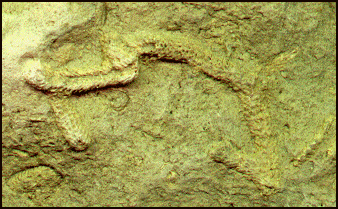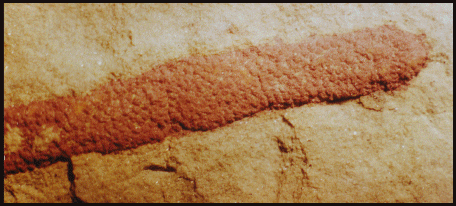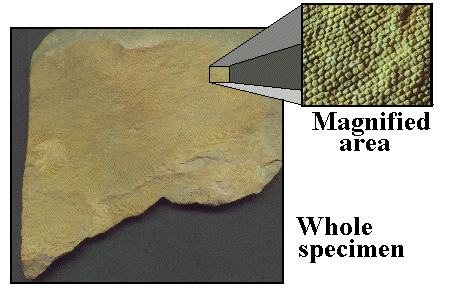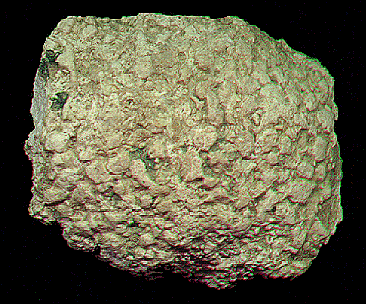Bryozoans
Bryozoans are colonial animals that were originally thought to be allied to corals but later investigation of specimens which still retained details of the soft parts of the organisms showed that their anatomy was more closely related to the brachiopods.
Like corals they were composed of a calcareous skeleton which housed a multitude of tiny zooids.
The images below are a sample of the various forms that these colonies took.

Silurian "stick" bryozoan from the limestone of Wenlock Edge. These are very common in the rocks of this area. They were important contributers to the formation of limestone reefs at that time. (size 3cm)

This specimen is from the Wenlock Limestone formation near Ludlow. Another Silurian "stick" bryozoan but the preservation is excellent. Each bump on the surface was home to an individual zooid. (size 1cm)

This is a large piece (10 cm) of the fan shaped bryozoan Fenestella. The name literally means 'little windows' and from the magnified area you can see how appropriate this is. It was collected in Lower Carboniferous limestone near Edinburgh.

I am having problems with this one! All the references that I have consulted seem to indicate that this is a specimen of Fascicularia. This bryozoan was a prominent component of the Pliocene 'coralline crag' formation, named when bryozoans were still thought to be related to corals. This specimen was found in much earlier Eocene rocks on the Isle of Wight. (size 3cm)( I have this nagging suspicion that this might actually be a Cretaceous sponge.. any help is welcome)






